- Central star is a white dwarf (50000°)
- Hot blue gas at centre
- coolest red gas along the outer boundary.
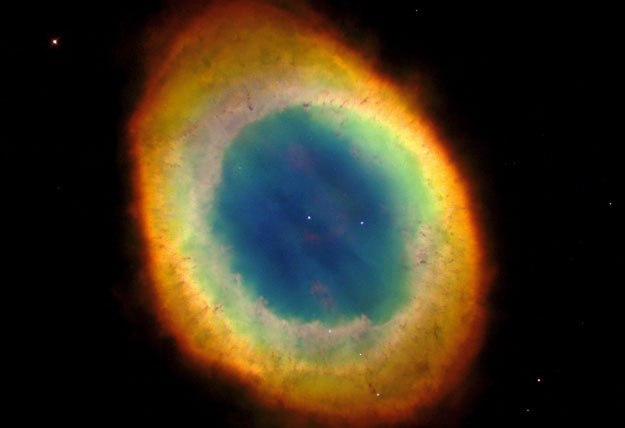
Credit: H. Bond et al., Hubble Heritage Team (STScI /AURA), NASA
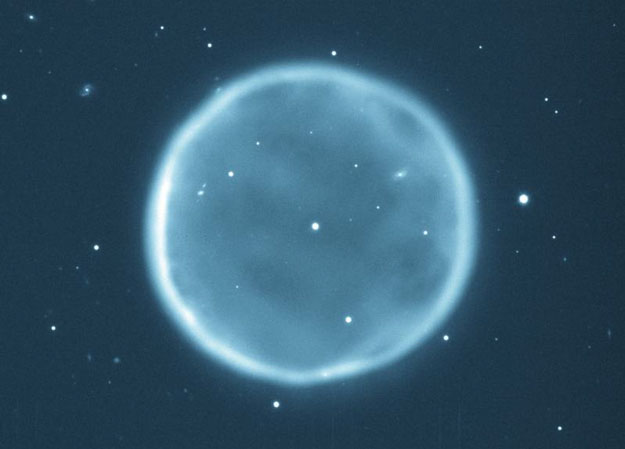

When a star as big as the sun reaches the end of its life, it turns into a planetary nebula: outer 1/3 of star is blown away, leaving very hot core as a white dwarf
The classic example is M57: The Ring Nebula
|
 Credit: H. Bond et al., Hubble Heritage Team (STScI /AURA), NASA |
| The star blows away its outer layers, so almost all the older ones we knew look like this. |  |
| or like this |  |
But now we have all sorts of weird shapes.
| This is the Cats-eye nebula: looks like successive explosions | 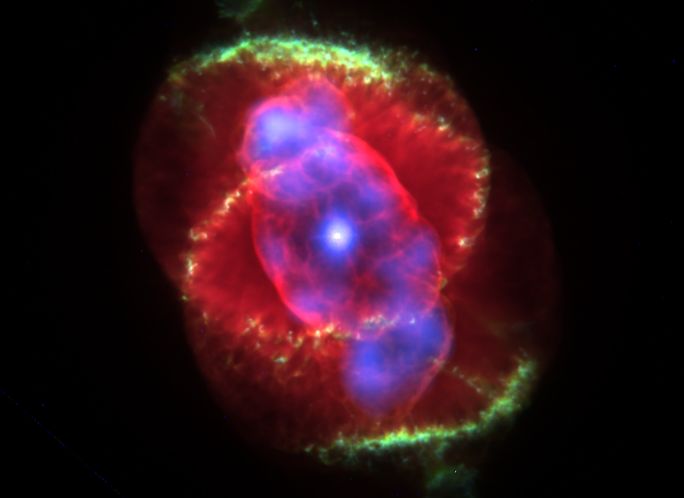 |
| Mz3: The Ant Nebula. Probably magnetic field is creating a "focussed" planetary nebula | 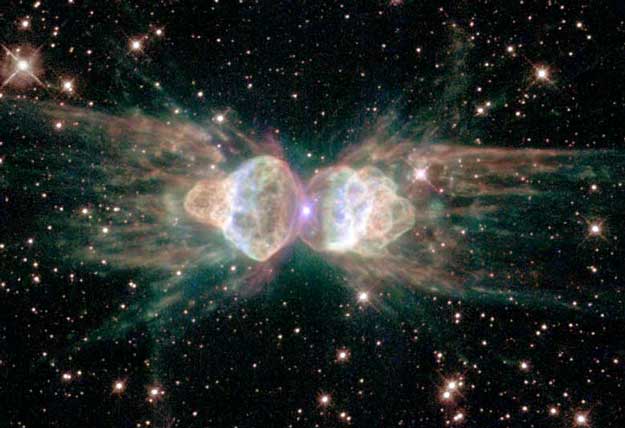 Credit: R. Sahai (JPL) et al., Hubble Heritage Team, ESA, NASA |
| Planetary Nebula CRL 618: this was a red giant a few hundred years ago, but it is now expelling jets of gas | 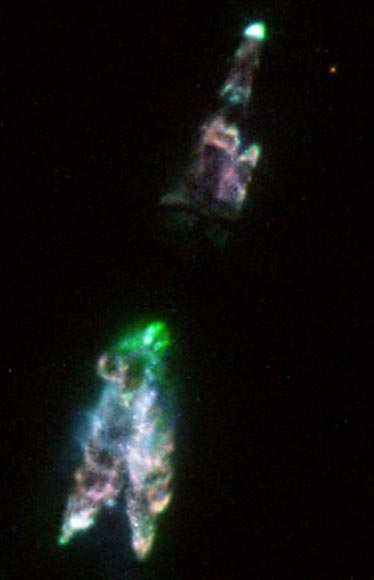 Credit: Susan R. Trammell (UNC Charlotte) et al., ESAIC, HST, ESA, NASA |
| NGC 2440: a very hot white dwarf which is lowing off its outer layers much faster |  Credit: H. Bond (STScI), R. Ciardullo (PSU), WFPC2, HST, NASA |
| IC 4406: a really weird planetary nebula: probably a cylinder that we see side on. How can a round star make a square nebula? IC 4406 is most probably cylindrical, with its square appearance the result of our vantage point. |  Credit: H. Bond (STScI), R. Ciardullo (PSU), WFPC2, HST, NASA |
Approx 1/30 yr known in Milky Way
6 visible in recorded history
| 1006 Type I SN 1006: History's Brightest Supernova. THis shows remnants of the expanding shockwave |  Credit: Frank Winkler (Middlebury College) et al., AURA, NOAO, NSF |
| 1054 Type I Crab. Two superimposed pictures show how it is still expanding |
| 1181 Type II. Now seen as radio source 3C58. THis is in X-rays | 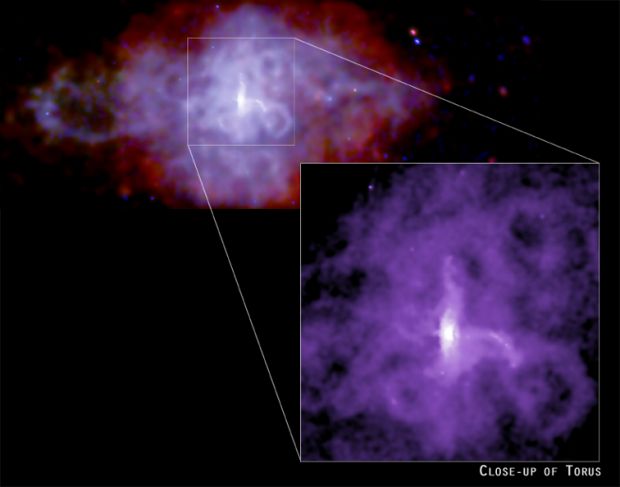
Credit: P. Slane (Harvard-Smithsonian CfA) et al., CXC, NASA |
| 1572 Type I Tycho Gas is still very hot, so produces X-rays,seen in blue at front of blast wave | 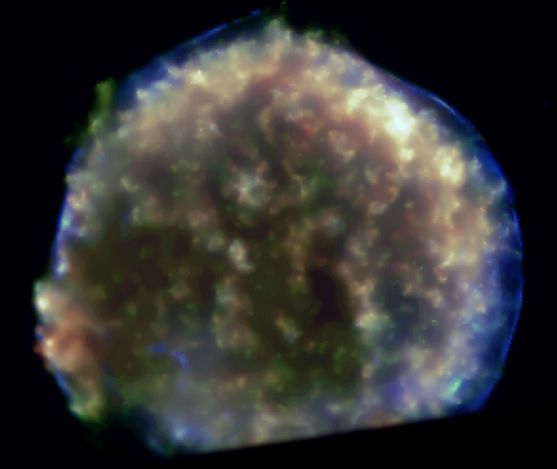 Credit: SAO, CXC, NASA Credit: SAO, CXC, NASA
|
| 1604 Type I Kepler. Temps still in excess of 1000000°C | 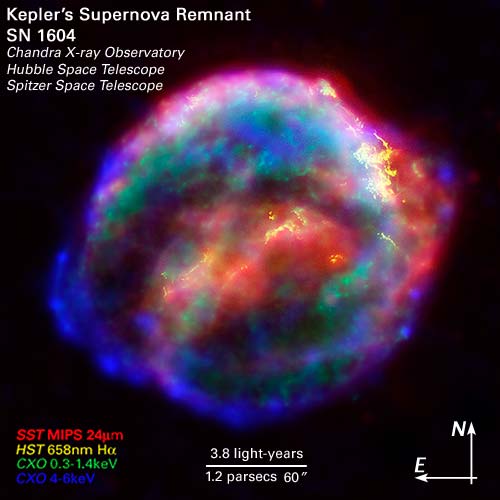
Kepler's SNR from Chandra, Hubble, and Spitzer Credit: R. Sankrit and W. Blair (JHU) et al., ESA, NASA Graphic: courtesy STScI |
| 1667 Type II Cas.A | 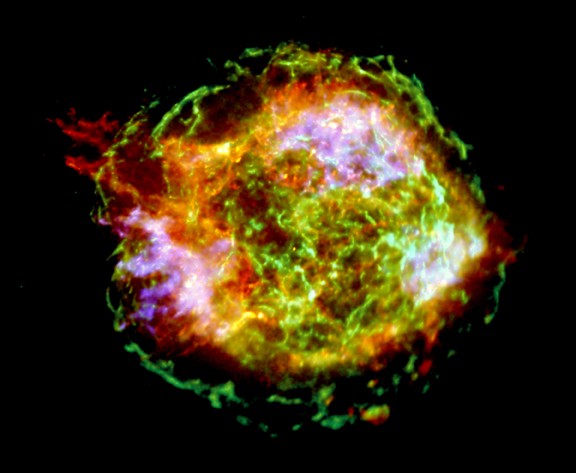 Credit: U. Hwang (GSFC/UMD), J.M. Lamming (NRL), et al., CXC, NASA, |
2 Kinds, distinguished by light curves
TYPE IDecay rapidly for 30 days, exponentially afterwardsIn all galaxies TYPE IIRapid decay -> Plateau->Rapid decay |
| Type 1 have a compact object (white dwarf) with a red giant, which expands and spills material onto companion, finally triggering catastrophic collapse. All type 1a seem to be the same (very important for later on!) | 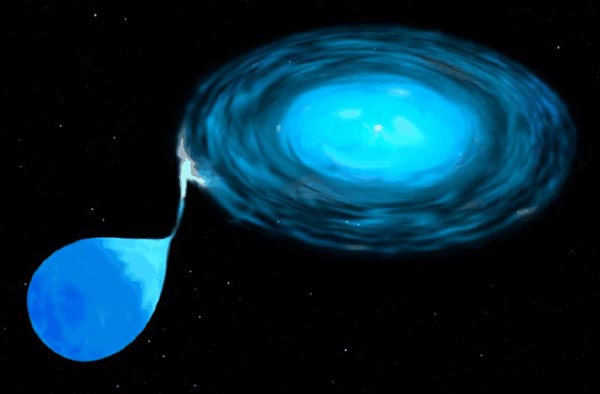 Drawing Credit: ST ScI, NASA |
Agrees with models of core collapse of heavy (>10 M₀ ) star
Tc > 109 °CMany in external galaxies:spectrum show ejected material has v - 10⁴ km s-1
Photographically February 23rd (unit is fraction of day!)
| v. fast initial rise, then increase to plateau |
3 hours before the light arrived a pulse of neutrinos hit the various detectors running at the time (Kamiokande, Mt.. Blanc) Theoretically predicted but never seen before or since.
Star could be identified with known one in catalog Sk-69°202 in Lesser Magellanic Cloud (first time we have been able to do this!) Distance ∼ 156000 lys ∼ 50 kpc |
| Progenitor was blue(!) supergiant
M ∼ 20M₀ May have companion star but definitely type II. Surrounded by rings before explosion |
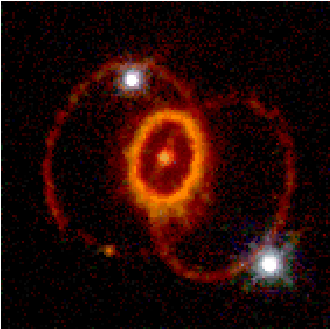 |
| Can now see blast wave from explosion hitting rings of material previously ejected | 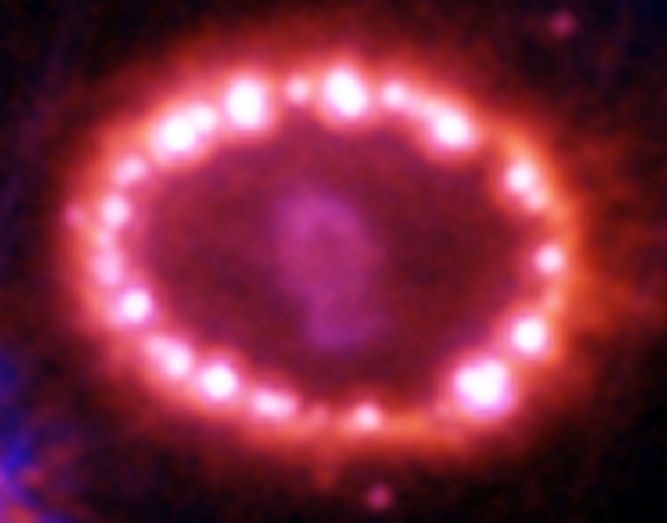 Credit: P. Challis, R. Kirshner (CfA), and B. Sugerman (STScI), NASA |
| Eta Carinae blew off a lot of material 150 years ago: probably pre-collapse now |  Credit: J. Morse (U. Colorado), K. Davidson (U. Minnesota) et al., WFPC2, HST, NASA |
| The Crescent Nebula is s shell of gas surrounding a central Wolf-Rayet star WR 136 (very hot and unstable). Should undergo a supernova explosion in next million years. | 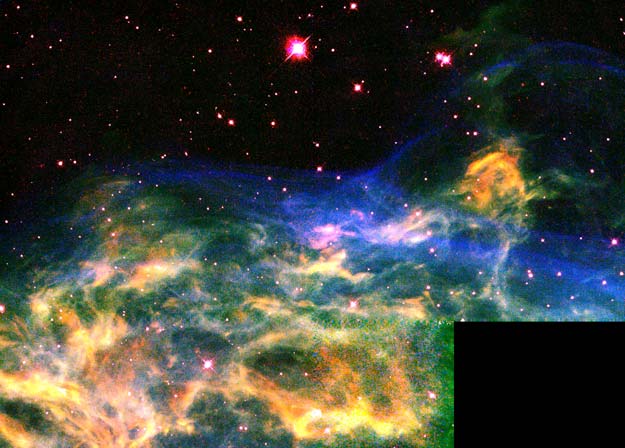 Credit: Brian D. Moore (ASU) et al., WFPC2, HST, NASA |
| NGC 3603: can see formation of stars and probably pre-collapse Sher 25 surrounded by rings | 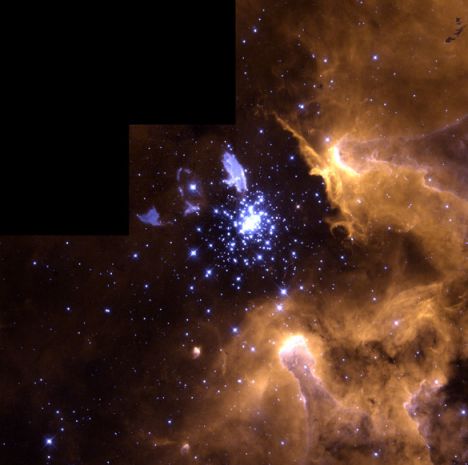 Credit: Wolfgang Brandner (JPL/IPAC), Eva K. Grebel (U. Wash.), You-Hua Chu (UIUC), NASA |